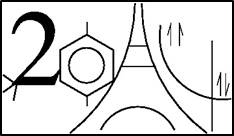The Ugi coupling is one of the most famous and most efficient multicomponent reaction. At a time of environmental concerns, steps and atom economy, absence of side products (excepted water) promoted this reaction to a tremendous essort during the last decade.
A few years ago, a variant of the Ugi reaction, called the Ugi-Smiles reaction, has been proposed by El Kaïm and Grimaud.[1] This coupling involves an aldehyde, an amine, an isocyanide and an activated phenol. Firstly proposed with a 2-nitrophenol, many phenol derivatives were successfully used but their choice was mainly dictated by their previous use in Smiles rearrangements. Recently, the mechanism was theoretically investigated by DFT.[2] The good correlation between yields and calculated activation energies led us to envision DFT simulations as a predictive tool to discover new partners for this coupling.
The present study is focused on halogenophenols and nitrosophenols as potential candidates for this four components reaction. Halogenophenols, as predicted, led to the corresponding aryl-imidates, as the corresponding energy barrier for the Smiles rearrangement is too high to proceed. After predicting nitrosophenols as good candidates, they were successfully tested for the Ugi-Smiles coupling. While no precedent of Smiles rearrangement involving a nitroso group was published, DFT calculations of the energy barriers for the nitroso group motivated the synthesis of the corresponding Ugi adduct and to propose a new synthesis for benzimidazoles.[3]
[1] Angew. Chem. Int. Ed., 2005, 44: 7961–7964.
[2] a) J. Org. Chem., 2012, 77(3), 1361-1366; b) J. Phys. Chem. A, 2013, 117, 8085-8042.
[3] Chem. Eur. J., 2014, accepted.
- Image

 PDF version
PDF version

